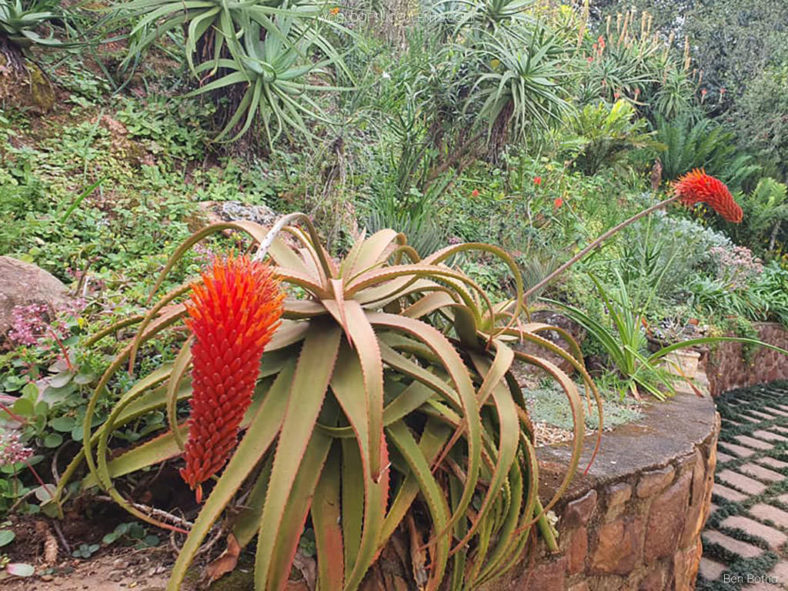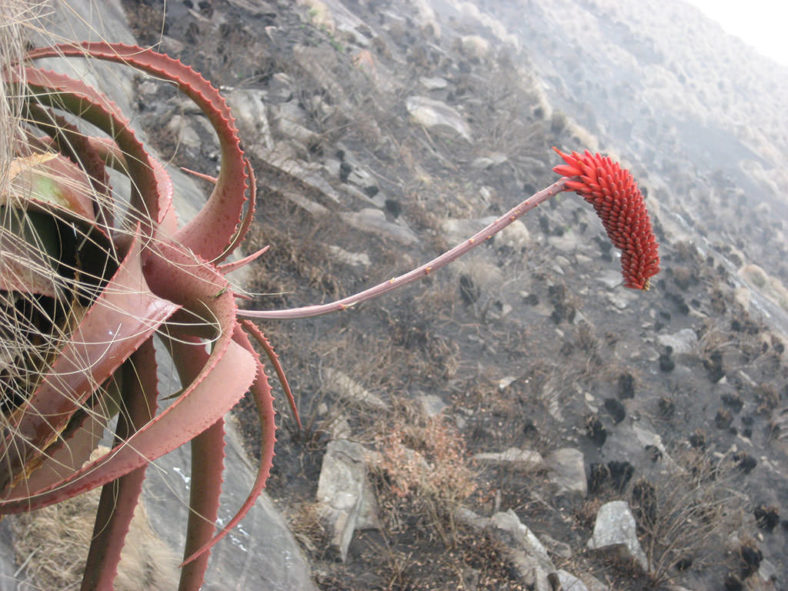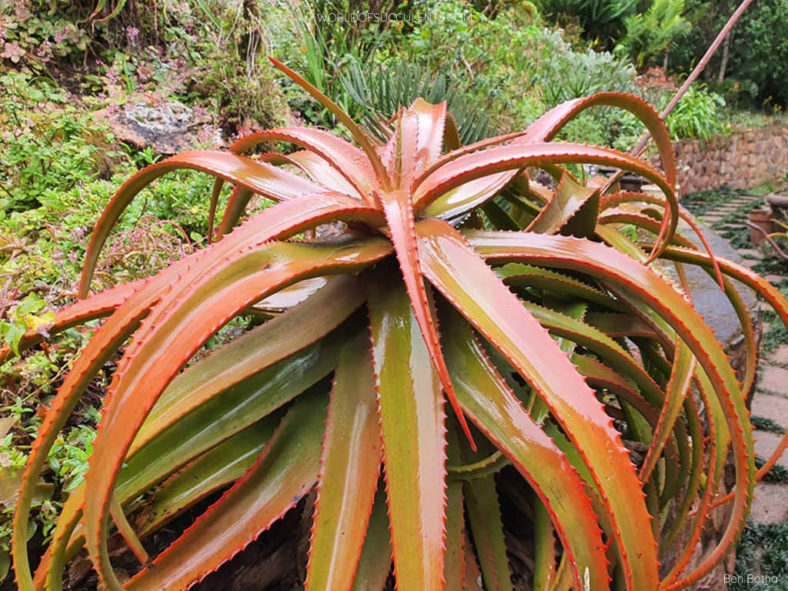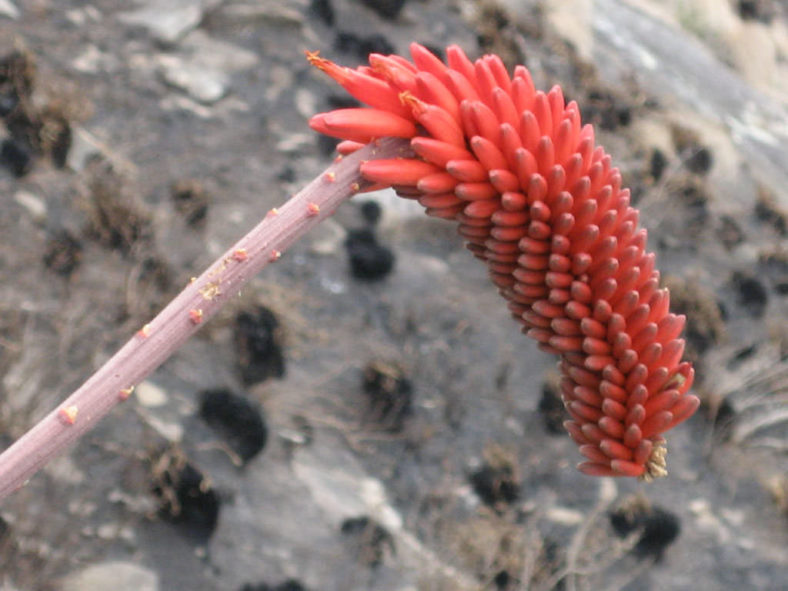Scientific Name
Aloe decurva Reynolds
Common Name(s)
Mount Zembe Aloe
Scientific Classification
Family: Asphodelaceae
Subfamily: Asphodeloideae
Genus: Aloe
Etymology
The specific epithet "decurva (de-KUR-vuh)" means "bent or curved downward" and refers to the downward curve of the raceme.
Origin
Aloe decurva is endemic to Zembe Mountain in the Manica Province of Mozambique. It grows in montane grasslands on steep rocky slopes at elevations ranging from 3,000 to 3,380 feet (915 to 1,030 m).
Description
Aloe decurva is a succulent plant that forms dense, usually solitary rosettes of dull green leaves with a reddish tinge and orange-tipped teeth along the margins. The rosettes are stemless or have a very short stem. The leaves are lance-shaped, erect-spreading, measuring up to 22 inches (55 cm) long and 4 inches (10 cm) wide. The deltoid teeth can grow up to 0.12 inches (0.3 cm) long and are about 0.4 inches (1 cm) apart.
The bright red to orange flowers appear densely packed in a usually unbranched inflorescence in summer. The inflorescence can grow up to 3 feet (90 cm) long, while the flowers can reach up to 1.6 inches (4 cm) in length and 0.2 inches (0.5 cm) in diameter. The raceme is curved downwards and can measure up to 8 inches (20 cm) long and 4.8 inches (12 cm) in diameter.

How to Grow and Care for Aloe decurva
Light: When growing A. decurva indoors, place your plant in a window with plenty of bright indirect sunlight. Rotate the pot once or twice a week so that all sides of the plant receive equal lighting. Outdoors provide light shade, especially during the hottest parts of the day.
Soil: Plant A. decurva in a well-drained soil mix formulated for succulents or make your own. Drainage is essential because too much moisture around roots can cause root rot.
Temperature: This succulent grows at its best at temperatures between 50 to 85 °F (10 to 30 °C). When temperatures shift below 50 °F (10 °C), it is time to bring your plant back inside. A. decurva can withstand temperatures as low as 25 °F (-3.9 °C). USDA Plant Hardiness Zones 9b to 11b, 25 to 50 °F (-3.9 to 10 °C).
Watering: This succulent does need regular watering but is very tolerant of drought conditions for short periods. Water deeply, but only when the soil is dry. Cut back on watering during the winter months. Do not let water stand in the rosettes.
Fertilizing: A. decurva generally does not require fertilizer but may benefit from the extra nutrients. Feed with a fertilizer for succulents in spring and summer only. Be sure to follow the label directions.
Repotting: This plant is not particularly fast-growing and will only rarely need repotting. Repot it in the spring in a container a few inches larger in diameter every few years to keep it from becoming rootbound.
Propagation: Since A. decurva has a solitary growth habit, it can be propagated only from seeds. For best results, sow seeds during the warm months.
Learn more at How to Grow and Care for Aloe.
Toxicity of Aloe decurva
A. decurva is not listed as toxic for people and pets.
Links
- Back to genus Aloe
- Succupedia: Browse succulents by Scientific Name, Common Name, Genus, Family, USDA Hardiness Zone, Origin, or cacti by Genus
Photo Gallery
Click on a photo to see a larger version.


